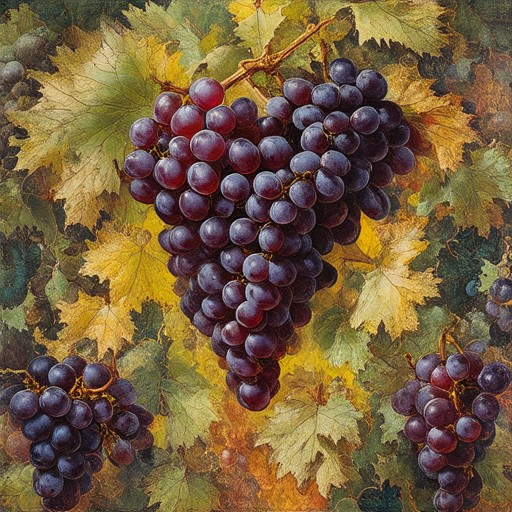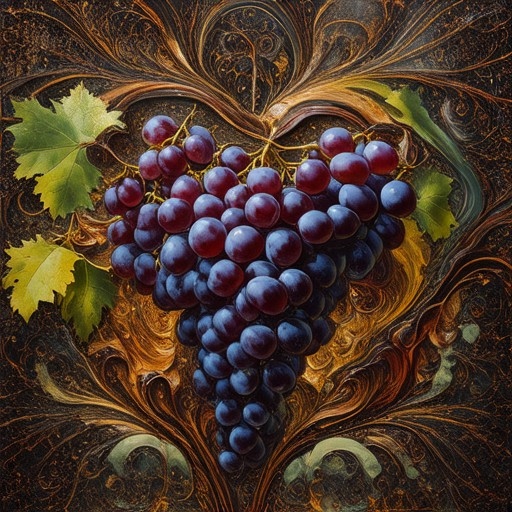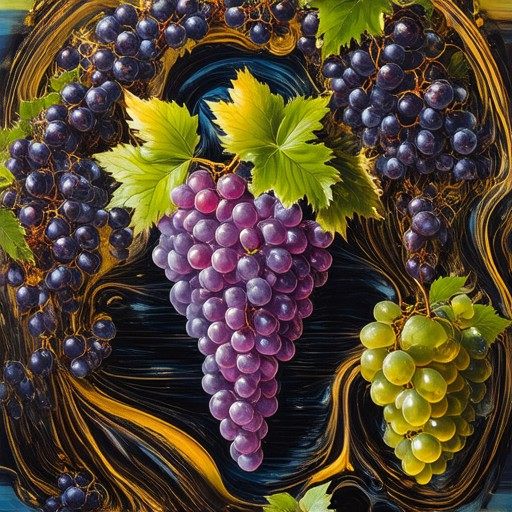Wine appreciation is often likened to an art form, where every sip tells a story of terroir, winemaking craftsmanship, and the passage of time. For those who seek to delve deeper into the world of wine, mastering the nuances of wine tasting score sheets becomes essential. Whether you’re a seasoned enthusiast or a curious newcomer, understanding how to evaluate and score wines systematically can transform your tasting experiences. This guide delves into the ins and outs of wine tasting score sheets, exploring tools, techniques, and methodologies that will empower you to craft informed evaluations and make meaningful comparisons between wines. From deciphering the 5 S’s of wine tasting to understanding the significance of a 93-point score and the intricacies of the 5000-point system, this comprehensive exploration will equip you with the knowledge needed to approach any tasting with confidence and precision.
Key Takeaways
- Master the 100-point wine tasting scale used by experts like Wine Spectator to evaluate wine quality and consistency.
- Understand the wine rating ranges: 90-99 points indicate exceptional quality, while 100 points signify perfection.
- Familiarize yourself with alternative rating systems, including numerical ratings and star-based systems.
- Learn what constitutes a good wine score: 90+ points are excellent, 85-89 points are very good, and scores below 85 are ideal for everyday enjoyment.
- Discover the key factors influencing wine scores, such as grape variety, region, vintage, and winemaking techniques.
- Compare leading rating platforms: Wine Spectator focuses on longevity, Robert Parker emphasizes concentration, and Decanter highlights drinkability.
- Explore the Fine Vines wine loyalty program and unlock exclusive benefits, including 5000 points redeemable for discounts and special offers.

How to Score a Wine Tasting
Scoring a wine tasting is a valuable skill for anyone looking to enhance their understanding and appreciation of wine. By using a systematic approach, you can evaluate wines more effectively and provide meaningful feedback. Here’s a step-by-step guide to help you excel:
1. Prepare Your Senses
Before diving into the tasting, ensure your senses are ready. Clear your mind, eliminate distractions, and approach the task with an open palate. Smell, taste, and feel are key components of wine evaluation.
2. Examine Appearance
First impressions matter. Look for aspects such as:- Clarity : Is the wine clear or cloudy?- Color : Note whether it appears youthful or mature.- Bubble Formation : Check for bubbles in sparkling wines.
3. Assess Aroma
Take a moment to sniff the wine. Identify both positive and negative attributes:- Nose : What fruits, flowers, or spices do you detect?- Intensity : Is the aroma strong or subtle?- Balance : Does the aroma reflect the wine’s overall character?
4. Taste and Flavor Profile
Sip and swish the wine in your mouth, coating your tongue. Pay attention to:- Initial Flavor : Notice the first impression upon entry.- Mid-Palate : Identify the middle flavors and notes.- Finish : Consider the lingering aftertaste.
5. Evaluate Mouthfeel
Mouthfeel adds another dimension to your evaluation:- Body : Is the wine light, medium, or full-bodied?- Acidity : Does it feel crisp or smooth?- Tannins : Are they present or absent?- Texture : Is it silky or rough?
6. Determine the Finish
After swallowing, think about the wine’s persistence:- Length : How long does the flavor linger?- Balance : Does the finish match the initial impression?
7. Use a Tasting Card
For a structured approach, use a wine tasting card. Rate each aspect systematically:- Appearance : 1/10 to 10/10- Aroma : 1/10 to 10/10- Flavor : 1/10 to 10/10- Mouthfeel : 1/10 to 10/10- Finish : 1/10 to 10/10
8. Take Notes
Record your observations. Compare wines side by side to identify differences. Over time, you’ll develop a more refined palate.
9. Stay Consistent
Avoid comparing wines subjectively. Stick to objective criteria and remain neutral. Practice regularly to improve your skills.
By following these steps, you’ll gain confidence in scoring wines accurately. Remember, the goal is to enjoy the process and share your findings with others who appreciate fine wines.
The 5 S’s of Wine Tasting
The 5 S’s of wine tasting are essential steps that help you evaluate and appreciate wine effectively. Here’s a breakdown:
- Sniff : Begin by gently sniffing the wine. This step allows you to identify the wine’s aroma, known as its “bouquet” and “nose.” Notice any fruity, floral, or woody scents.
- Swirl : After sniffing, swirl the wine in the glass. This motion aerates the wine, releasing more aromatic compounds and helping to combine the wine’s layers.
- Sip : Take a small sip of the wine. Pay attention to its taste, which includes notes like sweetness, acidity, and tannins. These elements contribute to the wine’s overall flavor profile.
- Spit : If you prefer not to consume the wine or want to save space during a tasting session, spit it out gently after sipping.
- Slurp : Finally, take a quick sip through your nose to hear the “slurp” sound. This technique helps in properly tasting the wine’s texture and finish.
Each of these steps contributes to a deeper understanding of the wine’s quality and character.

Is 93 a Good Wine Score?
A wine score of 93 falls within the high range of most rating systems, indicating exceptional quality and complexity. Here’s a breakdown of what this score typically signifies:
- Rating Systems: The 100-point scale commonly used by critics assigns 93 as a top-tier rating, reflecting wines of significant character and aging potential.
- Quality Indicator: A 93 suggests the wine is likely to be impressive now but may also benefit from further cellaring to develop more complexity.
- Comparison Perspective: While 94+ ratings are often considered exceptional, a 93 is still highly regarded and a reliable indicator of a fine wine.
### Pros of a 93 Rating:- Quality Assurance: Wines scoring 93 are typically well-crafted, offering rich flavors and smooth textures.- Aging Potential: These wines can often age gracefully for several years, developing deeper aromas and tastes over time.- Enjoyment Factor: Many find 93-rated wines to be approachable yet sophisticated, making them ideal for special occasions or gourmet meals.
### When to Enjoy a 93:- With Fine Dining: Pair 93-rated wines with gourmet dishes to fully appreciate their elegance and depth.- For Special Events: These wines are perfect for celebrating milestones or gatherings where quality matters.
### Resources for More Information:For a deeper understanding of wine ratings and types, visit Fine Vines’ Wine Rating Guide . This comprehensive resource explores how ratings reflect wine quality and helps you navigate the world of wine with confidence.

What is the wine tasting point scale?
The wine tasting point scale commonly used by Wine Spectator rates wines on a 100-point system, where:
- 90-99 points : These wines are considered excellent and highly recommended. They may show some flaws but are still impressive overall.
- 100 points : This is the highest rating, reserved for wines of exceptional quality that are truly memorable and worth collecting.
This scale helps consumers evaluate and compare wines based on factors like aroma, taste, and overall quality. Competitors like Robert Parker’s Wine Advocate and The Wine Enthusiast also use similar systems, ensuring a fair and consistent approach to wine evaluation.
Fine Vines offers detailed wine tasting guides and vineyard insights to help enthusiasts understand and appreciate these rating systems. Explore our resources to learn more about wine education and pairing tips.
What is a Good Wine Score?
A good wine score depends on the rating system used, but generally, a score of 90 or above is considered excellent, while 85 to 89 is very good. Scores often range from 0 to 100, with 100 indicating perfection. Here’s a breakdown of common rating systems:
- 100-Point Scale :
- This system evaluates wine based on taste, aroma, balance, and overall quality. A perfect score of 100 is rare, achieved by wines like Bordeaux or Burgundy.
- Numerical Ratings :
- Wines are rated on a scale, often between 0 and 5 stars or 80 to 100 points. A 95 might indicate a wine of exceptional quality, while an 88 suggests it’s still enjoyable but not top-tier.
Factors Influencing Wine Scores:
- Grape Variety : Some grapes, like Cabernet Sauvignon or Chardonnay, are historically scored higher due to their consistency and prestige.
- Region : wines from renowned areas like Napa Valley or Bordeaux tend to receive higher scores.
- Vintage : Exceptional years can boost scores, while poor vintages may lower them.
- Winemaking Techniques : High-tech methods like barrel aging or malolactic fermentation can elevate scores.
Comparing Rating Platforms:
- Wine Spectator : Known for its 100-point scale, focusing on consistency and longevity.
- Robert Parker (The Wine Advocate) : Uses a 100-point system, emphasizing concentration and complexity.
- Decanter : Offers a 20-point scale, highlighting drinkability and food-pairing potential.
Tips for Interpreting Wine Scores:
- High Scores (90+) : Indicate world-class wines suitable for special occasions.
- Mid-High Scores (85-89) : Still excellent but may require cellaring for further development.
- Lower Scores (Below 85) : Wines that are good for everyday drinking or earlier consumption.
Understanding these scoring systems helps you appreciate wine quality and make informed purchasing decisions. Explore Fine Vines’ guide to wine regions and grape varieties to learn more about how these factors influence wine scores.

What is 5000 Total Wine Points?
Fine Vines wine loyalty program offers 5000 points as a reward for qualifying purchases. These points can be redeemed for discounts and special offers, providing valuable benefits to our members. By participating in our program, you earn points with every purchase, which can be accumulated over time to maximize your savings.
Our program is designed to enhance your shopping experience, offering exclusive deals and early access to new arrivals. With 5000 points, you can enjoy significant discounts, making it easier to explore a wider variety of wines. We encourage our members to utilize these points effectively to take full advantage of the perks available.
For more information on how to earn and redeem points, visit our wine loyalty program page . Explore how you can start earning points today and discover the benefits of being a Fine Vines member.
wine tasting guides and grape varieties guide to learn more about wine appreciation and maximize your rewards.



0 Comments